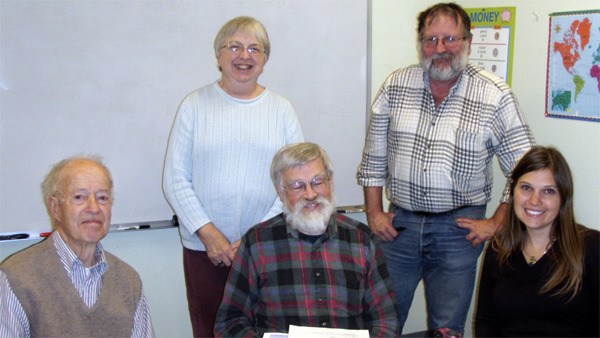Solar-power electric vehicles running from Monroe to Preston, linking trails to transit hubs at major highways may seem far out.
But members of Transition Snoqualmie Valley are sounding the call for the community to plan for a hopeful future in the face of dwindling global oil reserves.
Carnation resident and former mayor and school superintendent Bob Patterson addressed future transportation needs at a recent meeting by the Lower Snoqualmie Valley Transit Solutions Committee.
Participants included Kristy Trione, Jenny Bullard of Riverview School District, Ruth Tolmasoff of Snoqualmie Valley Transit, the Senior Centers and Snoqualmie Tribe, representatives of Hopelink, and Jim Arrowsmith of King County Metro. Former Metro employees Barb DeMichele and Jim Hermanson also became involved.
Survey results
The committee developed a survey that was mailed to households in Carnation with utility bills, distributed and collected at King County libraries, community meetings, through social media, and Survey Monkey in September and October. Nearly 70 surveys were returned to inform the committee’s final discussion, held October 25 in Carnation.
Survey responses reflected the unique transportation challenges in the Valley. More than 43 percent of respondents said that they currently use public transportation.
Reasons for use of public transportation included not having a driver’s license, not wanting to drive, difficulty and expense of parking at the destination, reducing carbon footprint, cost effectiveness, relaxation, allowing for reading and sleeping on the bus, and using less energy.
The primary reason respondents cited for not riding the bus was lack of convenience. Also noted were long rides, limited service and connections, and lack of luggage or bicycle space. Transporting children and supplies and needing mobility to more than one destination were reasons to drive personal vehicles. One respondent objected to public dollars being spent on public transportation altogether.
Most indicated that they would use transit during the week. About one third also said that they would use transit on the weekends. Most of the surveys were from residents of Carnation, Fall City and Duvall.
Improving transit
Respondents shared numerous ideas for improving public transit, from increasing services, express routes, better scheduling, building underground walking tunnels between bus stops at major highway intersections, offering coupons to events, installing luggage racks and larger bike racks, and installing additional park-and-ride and bicycle stops along existing routes. The committee discussed the possibility of opening Park and Ride lots in partnership with local churches and improved bicycle access to existing trails and metro lines.
Another idea was to establish special stops for ridesharing, where riders can be picked up to save on a toll that is waived for carpools.
The committee recognized constraints in an economy where additional services are not likely. However, some members saw some room for tweaking and promoting infrastructure to reduce overall consumption.
One promising development the committee learned about was a new metro online matching service, available at www.rideshareonline.com. This site helps individuals, businesses, and groups plan and coordinate trips using various methods, from public transportation to private vehicles, bicycles and by foot.
The service will soon expand to Oregon and Idaho. You could find neighbors, traveling to Portland or the grocery store, with whom to share gas and travel expenses.
While Valley residents typically have longer commutes, some can save fuel by traveling all or part of their route by bicycle. The Washington Bicycle Alliance has a Bike Buddy program to promote commuting by bike. You can match up bike buddies at rideshareonline.com and www.bicyclealliance.org/commute/bikebuddy.html.
Another idea was promoting group field trips using public transit. When people who have not taken the bus travel with those who have, they are more likely to feel comfortable using it in the future. For example, groups of friends could travel to Seattle to see a play or a group of families could go together to the Children’s Museum.
To learn more about Transition Snoqualmie Valley, or view raw data from the survey visit transitionsnoqualmievalley.ning.com/


